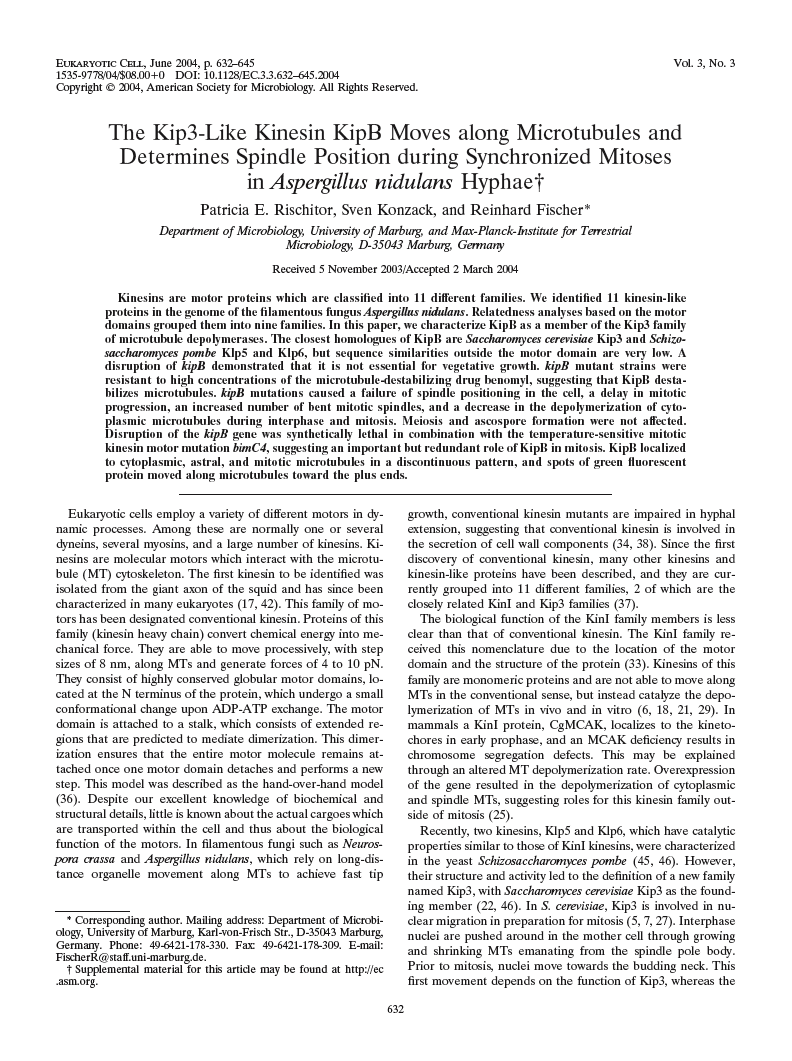Rischitor et al. 2004
The Kip3-like kinesin KipB moves along microtubules and determines spindle position during synchronized mitoses in Aspergillus nidulans hyphae. Eukaryot. Cell, 3(3):632-645.
Rischitor, E.P., Konzack, S. & Fischer, R.
Abstract
Kinesins are motor proteins which are classified into 11 different families. We identified 11 kinesin-like proteins in the genome of the filamentous fungus Aspergillus nidulans. Relatedness analyses based on the motor domains grouped them into nine families. In this paper, we characterize KipB as a member of the Kip3 family of microtubule depolymerases. The closest homologues of KipB are Saccharomyces cerevisiae Kip3 and Schizosaccharomyces pombe Klp5 and Klp6, but sequence similarities outside the motor domain are very low. A disruption of kipB demonstrated that it is not essential for vegetative growth. kipB mutant strains were resistant to high concentrations of the microtubule-destabilizing drug benomyl, suggesting that KipB destabilizes microtubules. kipB mutations caused a failure of spindle positioning in the cell, a delay in mitotic progression, an increased number of bent mitotic spindles, and a decrease in the depolymerization of cytoplasmic microtubules during interphase and mitosis. Meiosis and ascospore formation were not affected. Disruption of the kipB gene was synthetically lethal in combination with the temperature-sensitive mitotic kinesin motor mutation bimC4, suggesting an important but redundant role of KipB in mitosis. KipB localized to cytoplasmic, astral, and mitotic microtubules in a discontinuous pattern, and spots of green fluorescent protein moved along microtubules toward the plus ends. Copyright 2004 American Society for Microbiology

